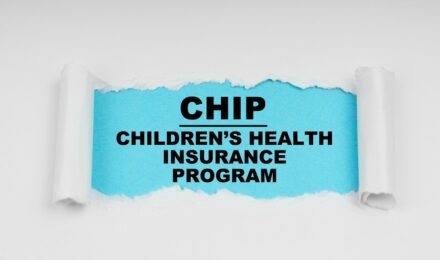Contents
The Earned Income Tax Credit (EITC) is a pivotal financial resource for working families and individuals. It goes beyond simply reducing tax liabilities—it provides a direct refund, often serving as a much-needed financial lifeline. Whether you’re new to the EITC or a seasoned filer, understanding how to fully maximize this benefit can significantly enhance your financial stability.
Here’s everything you need to know about claiming and optimizing this powerful credit.
What Is the Earned Income Tax Credit?
The Earned Income Tax Credit is one of the most impactful programs in the U.S. tax system, designed to help low- to moderate-income workers. Unlike many other tax credits, the EITC is refundable, meaning it can result in a refund even if you owe no taxes. This unique feature makes it especially beneficial for households with lower earnings.
The credit amount varies based on income, filing status, and the number of qualifying children. It rewards earned income by increasing as you earn more (up to a point), then gradually tapering off. This careful design ensures fairness while encouraging work.
The EITC isn’t just a line item on your tax return—it’s an opportunity to reclaim money you’ve worked hard to earn and use it to cover essentials, pay down debt, or save for the future.
Who Qualifies for the EITC?
Eligibility for the Earned Income Tax Credit is based on specific criteria. While the rules may appear complex at first, they are structured to ensure the credit reaches those who need it most.
- Earned Income Requirement
To qualify, you must have earned income from wages, salaries, tips, or self-employment. Certain disability benefits and nontaxable combat pay may also count. However, passive income like interest, dividends, or rental earnings does not qualify. - Investment Income Cap
For the 2024 tax year, your investment income must not exceed $11,600. Exceeding this cap disqualifies you entirely, so it’s important to keep a close watch on any income from investments. - Filing Status
You must use one of the following filing statuses to qualify: Single, Head of Household, Qualifying Widow(er), or Married Filing Jointly. Unfortunately, those filing as Married Filing Separately are ineligible. - Qualifying Children
Children can significantly increase your EITC. To qualify, they must meet specific requirements for age, relationship, residency, and joint return. Even if you don’t have children, you may still be eligible if you meet additional criteria, such as being between 25 and 64 years old.
Income Limits and Credit Amounts
The amount of EITC you can receive depends on your income, filing status, and the number of qualifying children. Below is a quick overview of income limits and maximum credits for the 2024 tax year.
| Number of Qualifying Children | Filing Status | Maximum AGI | Maximum Credit |
|---|---|---|---|
| 0 | Single, Head of Household | $18,591 | $632 |
| 0 | Married Filing Jointly | $25,551 | $632 |
| 1 | Single, Head of Household | $49,084 | $4,213 |
| 1 | Married Filing Jointly | $56,004 | $4,213 |
| 2 | Single, Head of Household | $55,768 | $6,960 |
| 2 | Married Filing Jointly | $62,688 | $6,960 |
| 3 or more | Single, Head of Household | $59,899 | $7,830 |
| 3 or more | Married Filing Jointly | $66,819 | $7,830 |
These figures highlight how dramatically the EITC can increase, especially for larger families. Knowing where you fall within these thresholds is the first step to optimizing your claim.
How to Maximize Your EITC Refund
Securing the full value of the Earned Income Tax Credit isn’t just about meeting the eligibility requirements—it requires thoughtful preparation. Follow these tips to make sure you’re getting every dollar you qualify for:
- Report Income Accurately
Income reporting errors can reduce your credit or delay your refund. Always double-check pay stubs, W-2 forms, and any other income documents to ensure precision. - Claim All Eligible Children
If you have qualifying children, ensure they meet the EITC criteria. Each additional child significantly increases your potential credit. - Keep Investment Income Below the Threshold
The $11,600 cap on investment income is strict. If your passive earnings approach this limit, carefully review your financial portfolio to avoid disqualification. - Utilize Free Tax Preparation Resources
The IRS offers free tax assistance programs like Volunteer Income Tax Assistance (VITA) and Tax Counseling for the Elderly (TCE). These services can ensure your return is accurate and complete. - File Electronically and Choose Direct Deposit
Filing electronically and opting for direct deposit not only expedites your refund but also minimizes the chances of errors in processing.
Common Mistakes and How to Avoid Them
While claiming the EITC is straightforward for most, certain errors can lead to delays or even disqualification. Avoid these common pitfalls:
- Incorrect Social Security Numbers
Double-check that all Social Security numbers listed on your tax return match official records. - Misclassified Filing Status
Using the wrong filing status can disqualify you. For instance, some mistakenly claim Head of Household when they don’t meet the requirements. - Misreporting Income
Self-employed workers or gig economy participants must carefully track all earnings. Inaccurate reporting—whether intentional or accidental—can cause issues. - Ineligible Qualifying Children
Ensure your children meet all the required tests. Even a minor oversight, like failing to meet the residency requirement, can invalidate their eligibility.
Conclusion
The Earned Income Tax Credit is far more than a simple tax benefit—it’s a financial game-changer for millions of hardworking Americans. By understanding the eligibility requirements, avoiding common errors, and using free resources, you can maximize your refund and gain greater financial peace of mind. Don’t miss out on the chance to claim what you’ve earned. Take control of your taxes today and make the most of this invaluable credit.
Resources
- IRS Earned Income Tax Credit Overview
Visit the official IRS page for detailed instructions on EITC eligibility and claiming. irs.gov - Taxpayer Advocate Service
If you encounter issues or delays, the Taxpayer Advocate Service can provide personalized support. taxpayeradvocate.irs.gov - National Community Tax Coalition
This nonprofit organization offers free tax preparation services to help low-income families maximize their refunds. tax-coalition.org
Contents
The Earned Income Tax Credit (EITC) is a pivotal financial resource for working families and individuals. It goes beyond simply reducing tax liabilities—it provides a direct refund, often serving as a much-needed financial lifeline. Whether you’re new to the EITC or a seasoned filer, understanding how to fully maximize this benefit can significantly enhance your financial stability.
Here’s everything you need to know about claiming and optimizing this powerful credit.
What Is the Earned Income Tax Credit?
The Earned Income Tax Credit is one of the most impactful programs in the U.S. tax system, designed to help low- to moderate-income workers. Unlike many other tax credits, the EITC is refundable, meaning it can result in a refund even if you owe no taxes. This unique feature makes it especially beneficial for households with lower earnings.
The credit amount varies based on income, filing status, and the number of qualifying children. It rewards earned income by increasing as you earn more (up to a point), then gradually tapering off. This careful design ensures fairness while encouraging work.
The EITC isn’t just a line item on your tax return—it’s an opportunity to reclaim money you’ve worked hard to earn and use it to cover essentials, pay down debt, or save for the future.
Who Qualifies for the EITC?
Eligibility for the Earned Income Tax Credit is based on specific criteria. While the rules may appear complex at first, they are structured to ensure the credit reaches those who need it most.
- Earned Income Requirement
To qualify, you must have earned income from wages, salaries, tips, or self-employment. Certain disability benefits and nontaxable combat pay may also count. However, passive income like interest, dividends, or rental earnings does not qualify. - Investment Income Cap
For the 2024 tax year, your investment income must not exceed $11,600. Exceeding this cap disqualifies you entirely, so it’s important to keep a close watch on any income from investments. - Filing Status
You must use one of the following filing statuses to qualify: Single, Head of Household, Qualifying Widow(er), or Married Filing Jointly. Unfortunately, those filing as Married Filing Separately are ineligible. - Qualifying Children
Children can significantly increase your EITC. To qualify, they must meet specific requirements for age, relationship, residency, and joint return. Even if you don’t have children, you may still be eligible if you meet additional criteria, such as being between 25 and 64 years old.
Income Limits and Credit Amounts
The amount of EITC you can receive depends on your income, filing status, and the number of qualifying children. Below is a quick overview of income limits and maximum credits for the 2024 tax year.
| Number of Qualifying Children | Filing Status | Maximum AGI | Maximum Credit |
|---|---|---|---|
| 0 | Single, Head of Household | $18,591 | $632 |
| 0 | Married Filing Jointly | $25,551 | $632 |
| 1 | Single, Head of Household | $49,084 | $4,213 |
| 1 | Married Filing Jointly | $56,004 | $4,213 |
| 2 | Single, Head of Household | $55,768 | $6,960 |
| 2 | Married Filing Jointly | $62,688 | $6,960 |
| 3 or more | Single, Head of Household | $59,899 | $7,830 |
| 3 or more | Married Filing Jointly | $66,819 | $7,830 |
These figures highlight how dramatically the EITC can increase, especially for larger families. Knowing where you fall within these thresholds is the first step to optimizing your claim.
How to Maximize Your EITC Refund
Securing the full value of the Earned Income Tax Credit isn’t just about meeting the eligibility requirements—it requires thoughtful preparation. Follow these tips to make sure you’re getting every dollar you qualify for:
- Report Income Accurately
Income reporting errors can reduce your credit or delay your refund. Always double-check pay stubs, W-2 forms, and any other income documents to ensure precision. - Claim All Eligible Children
If you have qualifying children, ensure they meet the EITC criteria. Each additional child significantly increases your potential credit. - Keep Investment Income Below the Threshold
The $11,600 cap on investment income is strict. If your passive earnings approach this limit, carefully review your financial portfolio to avoid disqualification. - Utilize Free Tax Preparation Resources
The IRS offers free tax assistance programs like Volunteer Income Tax Assistance (VITA) and Tax Counseling for the Elderly (TCE). These services can ensure your return is accurate and complete. - File Electronically and Choose Direct Deposit
Filing electronically and opting for direct deposit not only expedites your refund but also minimizes the chances of errors in processing.
Common Mistakes and How to Avoid Them
While claiming the EITC is straightforward for most, certain errors can lead to delays or even disqualification. Avoid these common pitfalls:
- Incorrect Social Security Numbers
Double-check that all Social Security numbers listed on your tax return match official records. - Misclassified Filing Status
Using the wrong filing status can disqualify you. For instance, some mistakenly claim Head of Household when they don’t meet the requirements. - Misreporting Income
Self-employed workers or gig economy participants must carefully track all earnings. Inaccurate reporting—whether intentional or accidental—can cause issues. - Ineligible Qualifying Children
Ensure your children meet all the required tests. Even a minor oversight, like failing to meet the residency requirement, can invalidate their eligibility.
Conclusion
The Earned Income Tax Credit is far more than a simple tax benefit—it’s a financial game-changer for millions of hardworking Americans. By understanding the eligibility requirements, avoiding common errors, and using free resources, you can maximize your refund and gain greater financial peace of mind. Don’t miss out on the chance to claim what you’ve earned. Take control of your taxes today and make the most of this invaluable credit.
Resources
- IRS Earned Income Tax Credit Overview
Visit the official IRS page for detailed instructions on EITC eligibility and claiming. irs.gov - Taxpayer Advocate Service
If you encounter issues or delays, the Taxpayer Advocate Service can provide personalized support. taxpayeradvocate.irs.gov - National Community Tax Coalition
This nonprofit organization offers free tax preparation services to help low-income families maximize their refunds. tax-coalition.org






